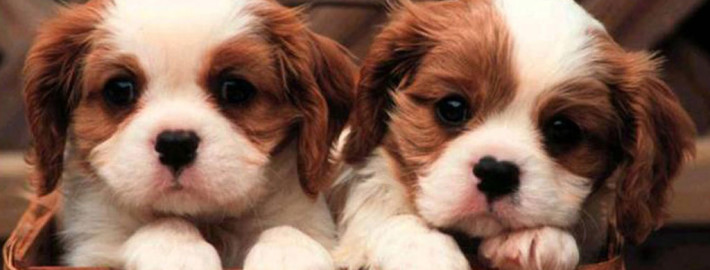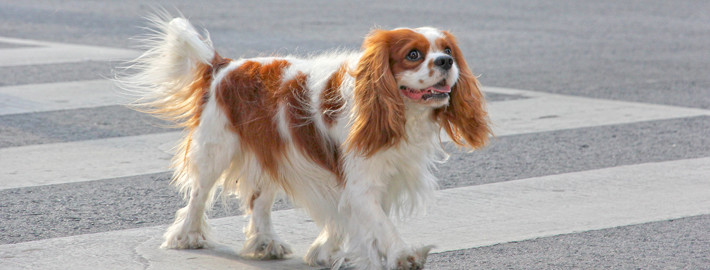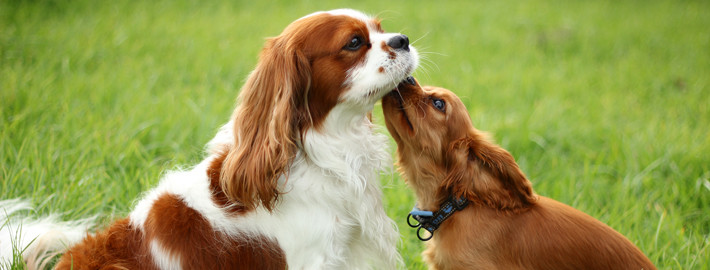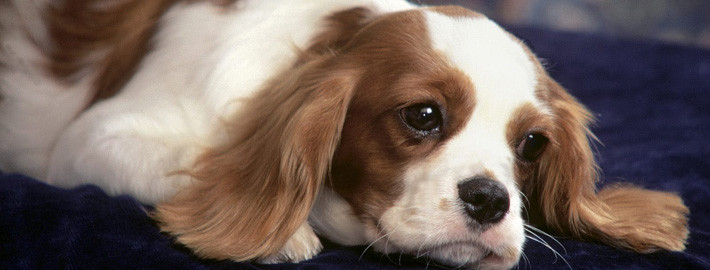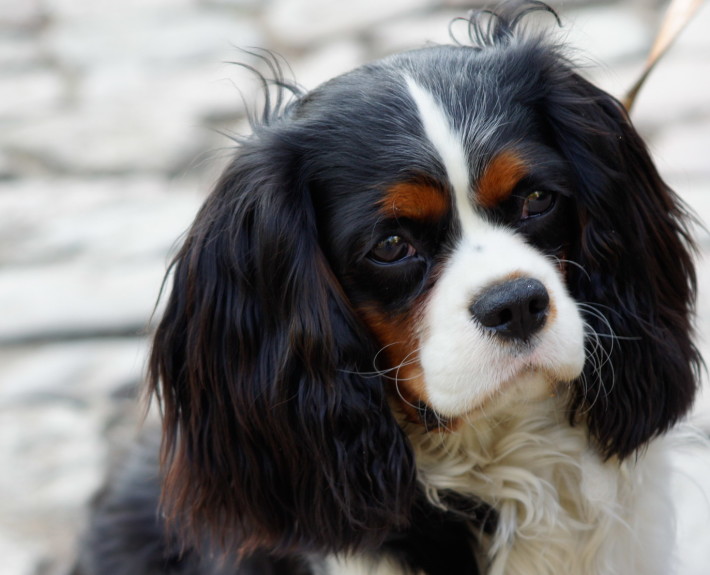What makes the Cavalier King Charles Spaniel Unique?
These friendly little lap dogs were once pampered royal pets, yet they are anything but snobs. Gregarious and loveable, Cavalier King Charles Spaniels just want to spend time having fun with their families. These energetic dogs are exceptionally well suited for apartment life and active families with older child
Breed Groups
Page Contents
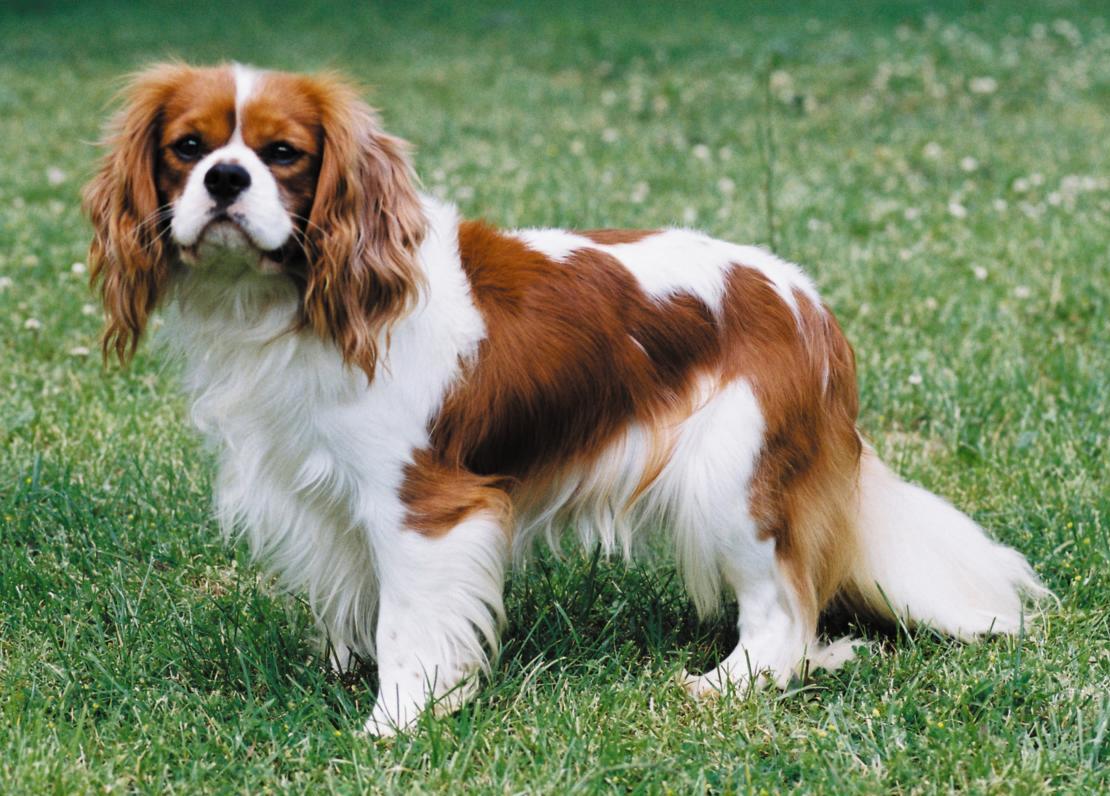
SnapShot
Is the Cavalier King Charles Spaniel Right For You?
The cav is an elegant, royal, toy spaniel, slightly longer than tall, with moderate bone. It retains the build of a working spaniel, yet in a smaller version. Its gait is free and elegant, with good reach and drive. Its silky coat is of moderate length, with a slight wave permissible. Long feathering on the feet is a breed characteristic. The cavalier in many ways fits the bill as an ideal house pet. It is sweet, gentle, playful, willing to please, affectionate and quiet. It is amiable toward other dogs, pets and strangers.
In 5 Words
- Playful
- Adaptable
- Fearless
- Patient
- Affectionate
Characteristics
Learn About the Cavalier King Charles Spaniel
Description
General Description
The Cavalier King Charles Spaniel is a well-proportioned little dog with an elegant and noble posture. The head on these dogs should be slightly rounded and they should have a completely black nose. This breed also has high set hanging (pendant) ears that are slightly feathered.
Their muzzles should be full, but tapered slightly to a shallow stop. Teeth on this breed should meet in a scissor bite. These dogs have short legs with compact, well-padded feet. They also have long necks, sloping shoulders, and straight forelegs.
Additionally, the Cavaliers have medium length, feathered tails set at the level of their backs. When a dog is relaxed their tails will be in a downward position. When a dog is in motion, its tail may be carried in an upward curl, but never above the level of its back.
Size
Among the largest toy dog breeds, Cavaliers measure 12 to 13 inches (30-33 cm.) at the shoulder blades and weigh between 13 to 18 pounds (5.9 to 8.2 kilograms) on average. The standard size is the same for both male and female dogs.
Coat
Dogs of this breed have medium length, silky fur. While curly coats are considered a fault in Chevaliers, wavy coats are permitted. Coats on Chevaliers come in black & tan, tri-color, red, and chestnut on white. These dogs shed fur in moderate amounts.
Short History of the Cavalier King Charles Spaniel
The modern Cavalier King Charles Spaniel is a descendant of the small Toy Spaniels seen in many paintings from the 16th, 17th and 18th centuries. Members of this breed have clearly been popular pets of the European nobility and aristocracy for a hundreds of years.
In the early 1920s, an American named Roswell Eldridge visited England and apparently was disappointed to discover that the original King Charles Spaniel had effectively been replaced by a smaller, flatter-faced breed. This was the direct result of crossbreeding the formerly popular spaniel types with the newly popular pugs. during the late 1700s. English breeders had also contributed by trying to rid these dogs of their long noses for some time. As a result, the original King Charles Spaniel was all but extinct.
Mr. Eldridge’s efforts to restore the breed to its former appearance and popularity eventually paid off, though he did not live to see it. Dogs of the type he and his fellow enthusiasts preferred were given the addition of “Cavalier” to their breed names to prevent them from being confused with the English varieties. The Cavalier King Charles Spaniel was accepted into the KC in 1945 and was grouped into the Miscellaneous class of the AKC in 1961. The breed has since been moved to the toy group in 1995
Temperament
The Cavalier is an elegant breed, but it retains the build of a working spaniel on a smaller scale. This dog will make an ideal house pet, as it is both affectionate and quiet. It is amiable toward other dogs, pets, and strangers. Cavaliers do not make good guard dogs because they are extremely friendly and are not at all aggressive. However, being relatively small and easy going, Cavaliers do make good travel companions.
These dogs do not handle being left alone in a household for long periods of time and in such circumstances would benefit from having another dog for company. Cavaliers are better suited as a playmate for older children. Small children and toddlers may see the small dogs as inanimate toys and treat them accordingly, which could result in unfortunate injuries to either the animal or the child.
When outdoors, a Cavalier’s spaniel heritage kicks in. As a result, these dogs love to explore, sniff, and chase whatever crosses their path. The Cavaliers also like to hunt small animals and insects. However, these dogs will be equally happy playing fetch with their human families. Unless it is playing in a fenced-in area, a Cavalier should always be kept on a leash because these dogs have no common sense when it comes to cars.
Caring for Your Cavalier King Charles Spaniel
General Health
In good health this breed will live between nine and 14 years. The Cavalier King Charles Spaniels are prone to a number of genetic conditions. As a breed, they show the highest incidence of Mitral Valve Disease (MVD), a disease in which the mitral heart valve does not close correctly when pumping out blood. This can manifest as such symptoms as palpitations, shortness of breath, pulmonary oedema and heart failure. Cavaliers are also rather prone to hereditary eye conditions, such as cataracts and a condition known as “dry eye”. The latter condition affects the tear ducts and reduces the production of tears needed to keep the eyes healthy.
These dogs also have a tendency to put on weight easily, therefore care should be taken not to overfeed them. Cavaliers were not bred to live outdoors, and should not be expected to do so. In fact, if the weather is extremely hot or cold it would be best to keep these dogs inside where the temperature can be controlled.
Care
Daily
Aside from daily feeding and watering, the Cavalier needs a fair amount of exercise as well. The dog can either be taken for a walk on its leash or be allowed to frolic in a safe, fenced in area. Cavaliers also have long coats, which will need brushing every other day.
Weekly
A weekly brushing of a Cavalier’s teeth will prevent the onset of periodontal disease, which is common in older animals. The feathering (the silky long hairs) on the tail, belly, and ears should be brushed two to three times a week in order to prevent mats or tangles from forming. The most common places for tangles on this breed is behind the ears and where the legs join the body. The entire dog should be combed completely at least once a week.
Monthly
As with any breed of dog, Cavaliers should be treated for heartworms and fleas on a monthly basis. Their toenails should be clipped and ears cleaned on an as-needed basis.
Grooming & Bathing
This breed will greatly benefit from bi-weekly or monthly baths, though some owners may choose to bathe them more frequently. As was mentioned earlier in this article, these dogs will require brushing two or three times a week. The hair that grows between the pads on their feet should also be kept trimmed
Exercise & Training
In general, Cavalier King Charles Spaniels are fairly easy to train, though there are the occasional Cavaliers that are far more stubborn than their contemporaries. House-training should not be difficult with this breed, provided that the dogs receive consistent instruction. They may run and hide if they are yelled at, but are quite partial to treats as rewards for desired behaviors. Owners that find this an effective training method should nonetheless exercise caution not to overdo the goodies due to the Cavaliers’ predilection for gaining weig

